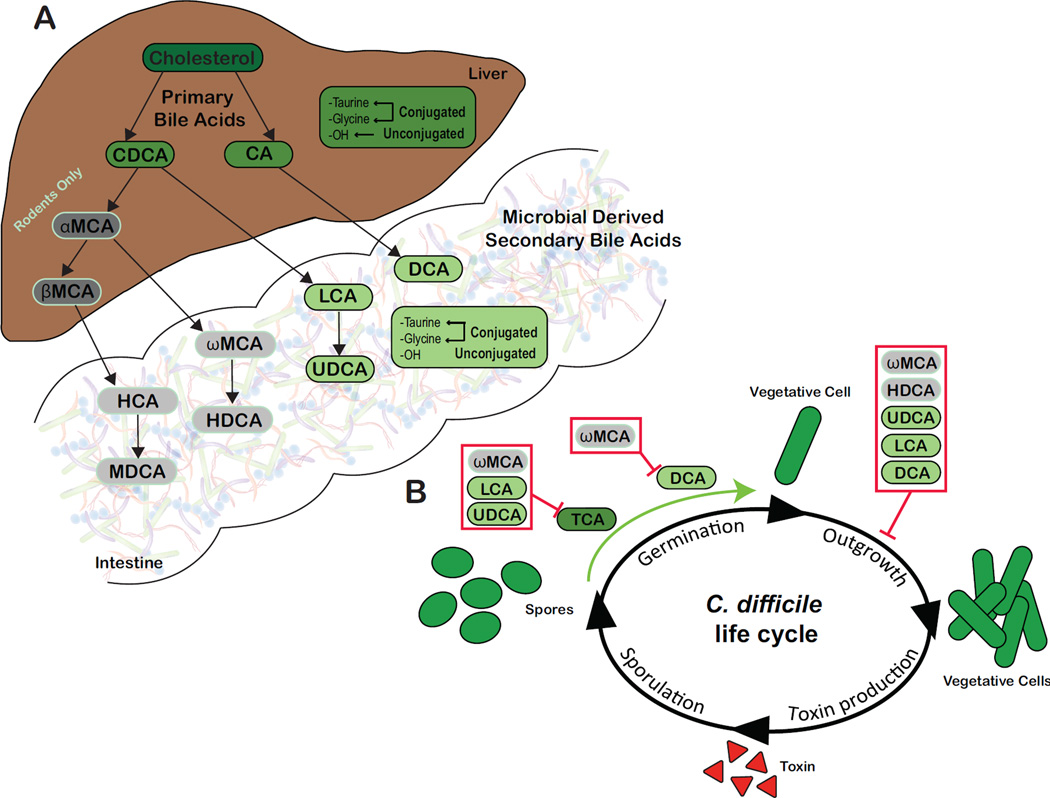Fig 1.
A: Production of microbial derived secondary bile acids. Primary bile acids, chenodeoxycholate (CDCA) and cholate (CA) are synthesized from cholesterol by hepatocytes in humans and rodents. In rodents, a portion of CDCA is further converted into α-muricholate (αMCA) and β-muricholate (βMCA), which are not recognized in humans (represented in gray). Primary bile acids can be unconjugated or further modified via conjugation to taurine or glycine within the liver. Once synthesized, host derived primary bile acids (represented in darker shades) enter into bile. Bile is stored in the gallbladder until release in the duodenum following ingestion of a meal. Once within the GI tract, the gut microbiota can convert host derived primary bile acids into secondary bile acids (represented in lighter shades). Microbial derived secondary bile acids can also be unconjugated or conjugated to taurine or glycine. B: Effects of various secondary bile acids on the life cycle of C. difficile in vitro. TCA is essential for germination of C. difficile spores (green arrow). TCA-mediated spore germination can be blocked by specific secondary bile acids (red box). DCA can also stimulate germination of C. difficile spores, a process that is inhibited by ωMCA in mice. Outgrowth of C. difficile vegetative cells is inhibited by multiple secondary bile acids (red box).
Abbreviations: CA, cholate; CDCA, chenodeoxycholate; DCA, deoxycholate; HCA, hyocholate; HDCA, hyodeoxycholate; LCA, lithocholate; MDCA, murideoxycholate; UDCA, ursodeoxycholate; αMCA, α-muricholate; βMCA, β-muricholate; ωMCA, ω-muricholate

